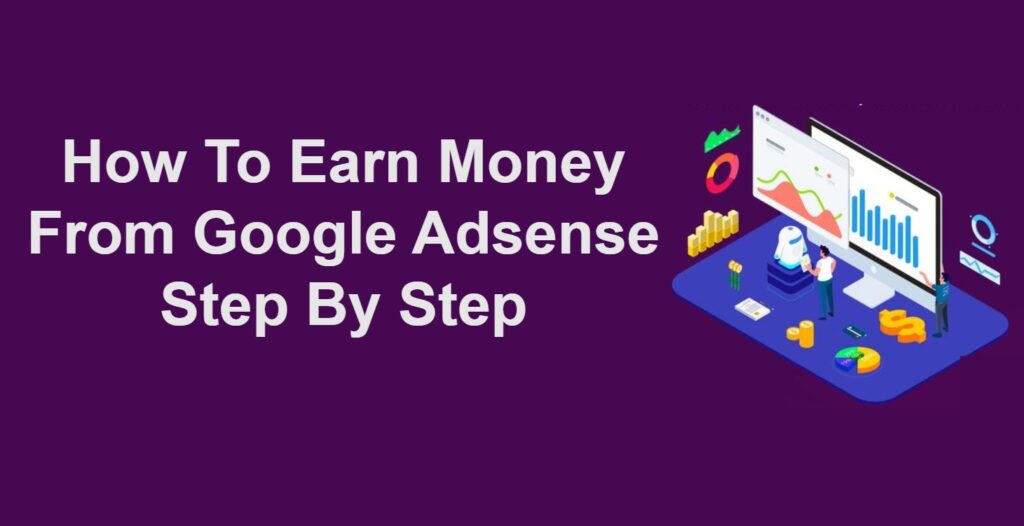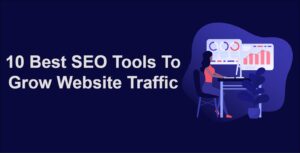To monetize your website or blog, Google AdSense can be a powerful tool to help you generate passive income. In this comprehensive guide, we’ll walk you through the process of earning money from Google AdSense. From setting up your account to optimizing your ad placements, we’ll cover everything you need to know to make the most of this advertising platform.
Earning money from Google AdSense requires a strategic approach, high-quality content, and a deep understanding of your audience. By following the guidelines in this comprehensive guide, you can optimize your website, attract more traffic, and maximize your earnings from Google AdSense.
Patience and persistence are key as success with AdSense typically takes time. Keep testing, analyzing, and refining your strategies to achieve long-term success and a sustainable income stream from AdSense.
How Google AdSense Works?
Google AdSense is an advertising program run by Google that allows website owners and bloggers to display targeted ads on their platforms. These ads are generated based on the content of the page, the user’s browsing history, and other factors. When visitors click on these ads or view them, you, as the website owner, earn a portion of the revenue.
Getting Started with Google AdSense
To get started with Google AdSense, follow these steps:
Sign up for an AdSense account: Visit the Google AdSense website and sign up for an account using your Google credentials. Ensure that you provide accurate and complete information during the registration process.
Submit your website for review: After signing up, submit your website or blog for review. Google will assess your site to ensure it complies with their policies and guidelines.
Get approval: Once your website is approved, you can log in to your AdSense account and access the ad code that you need to place on your website to start displaying ads.
Placing Ads Effectively
Now that you have your AdSense account set up, it’s time to strategically place ads to maximize your earnings.
1. Understand Ad Placement Policies
Google has specific policies regarding ad placements to maintain a positive user experience. Ensure that you comply with these policies to prevent potential issues with your AdSense account. Avoid placing ads too close to navigation menus, buttons, or other interactive elements.
2. Utilize Responsive Ad Units
Make use of responsive ad units to ensure that your ads adjust automatically to different screen sizes. This will enhance user experience on mobile devices, leading to more clicks and higher earnings.
3. Experiment with Ad Types and Sizes
Google AdSense offers various ad types and sizes. Test different combinations to find what works best for your website. Text-based ads, display ads, and native ads are among the popular choices. Remember to balance ad visibility with user experience.
4. Blend Ads with Website Design
Blending ads with your website’s design can make them appear more natural and less intrusive. Using colors that complement your site’s theme and fonts that match your content will make ads more visually appealing.
5. Optimize for Page Load Speed
Fast-loading pages are crucial for retaining visitors and encouraging ad clicks. Compress images, use caching, and choose ad formats that load quickly to improve user experience and boost your AdSense earnings.
Create High-Quality Content
High-quality content is the backbone of any successful AdSense strategy. Focus on creating valuable, engaging, and relevant content that resonates with your target audience.
1. Understand Your Audience
Identify your target audience’s interests, pain points, and preferences. Tailor your content to meet their needs and provide solutions to their problems.
2. Produce Evergreen Content
Evergreen content remains relevant over time, attracting continuous traffic and ad clicks. Write comprehensive articles, tutorials, and guides that stand the test of time.
3. Incorporate SEO Best Practices
To attract organic traffic and improve your search engine rankings, optimize your content with relevant keywords. Use tools like Google Keyword Planner to find popular keywords with low competition.
4. Format Content for Readability
Break up your content into smaller paragraphs, use subheadings, bullet points, and images to enhance readability. Visitors are more likely to stay longer on your site, increasing the chances of ad engagement.
Drive Traffic to Your Website
The more traffic you have, the higher the potential for ad clicks and revenue. Here are some effective strategies to drive traffic to your website:
1. Social Media Marketing
Utilize social media platforms to promote your content and engage with your audience. Share blog posts, infographics, and videos to attract visitors back to your site.
2. Search Engine Optimization (SEO)
Implement on-page and off-page SEO strategies to rank higher on search engine results pages. Higher rankings mean increased visibility and more organic traffic.
3. Email Marketing
Build an email list and send newsletters to your subscribers regularly. This can drive traffic to your site and keep your audience informed about your latest content.
4. Guest Blogging
Write guest posts for other reputable websites in your niche. This exposes your content to a wider audience and helps establish your authority in the industry.
5. Collaborate with Influencers
Partner with influencers in your niche to reach a broader audience. Influencers can share your content with their followers, driving more traffic to your site.
Analyze Performance and Making Improvements
To maximize your earnings with Google AdSense, regularly analyze your performance and make necessary improvements.
1. Use Google Analytics
Integrate Google Analytics with your website to track user behavior, page views, and ad clicks. This data will help you identify areas for improvement.
2. A/B Testing
Conduct A/B tests on ad placements, colors, and formats to determine what resonates best with your audience. This iterative process will help you optimize your ad revenue.
3. Monitor Ad Performance
Keep a close eye on the performance of your ads through your AdSense account. Identify the best-performing ad units and focus on those for better results.
Avoid Common Pitfalls
While Google AdSense can be a lucrative income stream, it’s essential to avoid some common pitfalls.
1. Click Fraud
Never engage in click fraud or encourage others to click on your ads artificially. Google actively monitors for fraudulent activities and may suspend or ban your account.
2. Violating AdSense Policies
Familiarize yourself with Google AdSense policies and ensure your website complies with them. Violating these policies can lead to penalties or account suspension.
3. Neglecting Mobile Users
With the increasing use of mobile devices, make sure your website is mobile-friendly. Neglecting mobile users may result in lower ad visibility and reduced earnings.





